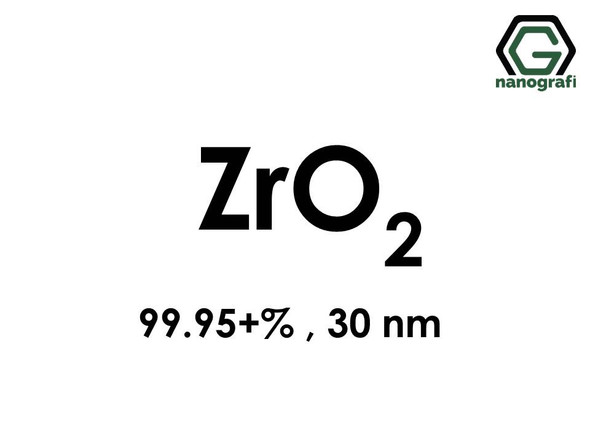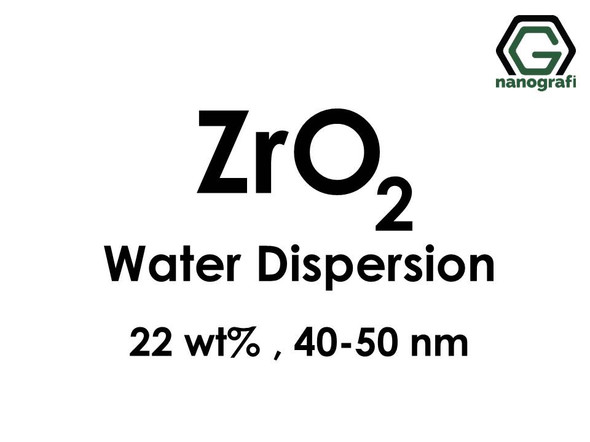Zirconium Oxide Nanoparticles
Zirconium oxide (ZrO2) is commonly known as zirconia. It is possible to observe ZrO2 in both amorphous and crystalline structures. There are different crystal structures of ZrO2; monoclinic, tetragonal, and cubic. The thermodynamically stable phase of ZrO2 is the monoclinic structure which is observed at low temperatures (below 1150 ˚C). Hence, ZrO2 nanoparticles are often in the monoclinic structure. The appearance of these nanoparticles is white and typically between 5-100 nm. ZrO2 is a wide bandgap semiconductor. It shows a wideband (2.5-3.8 eV) gap and short wavelengths at UV-visible range. The melting point of ZrO2 is 2715°C while the boiling point is 4300°C. In addition to high thermal properties, ZrO2 shows high chemical stability, high dielectric constant, excellent wear resistance, and biocompatibility. The application areas of zirconium oxide are;
- Fuel-cell technology,
- Catalysis,
- Protective coatings,
- Nanoelectronics,
- Ceramic biomaterials,
- Thermoluminescence UV dosimeters,
- Oxygen sensors.
- Product
- Qty in Cart
- Quantity
- Price
- Subtotal
-
Zirconium Oxide (ZrO2) Nanopowder/Nanoparticles, Purity: 99.95+ %, Size: 30 nm
€39.005 grams/39 € 25 grams/80 € 100 grams/131 € ...NG10SM10014€39.00 -
Zirconium Oxide (ZrO2) Nanopowder/Nanoparticles Water Dispersion, Size: 40-50 nm, 22 wt%
€38.0025 ml/38 € 50 ml/60 € 100 ml/103 € 500...NG02MD01028€38.00


